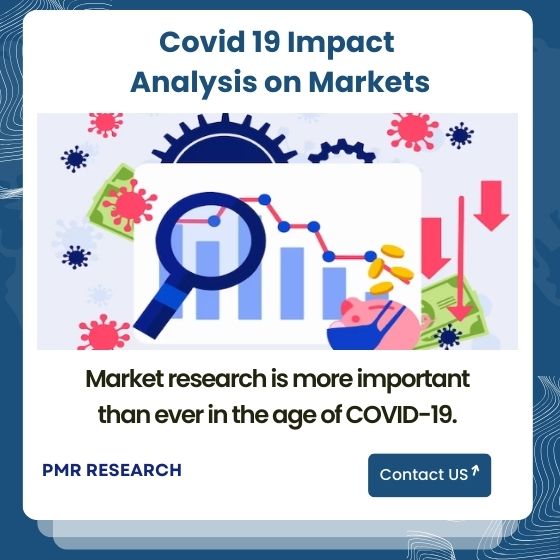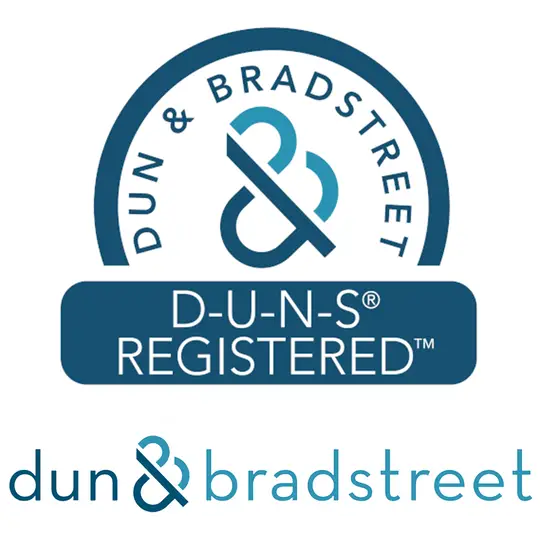
U.S. Fiber Optic Cables Market, By Types (Single and Multimode-Fiber Cables), by End-Use (Installers, Wholesalers and Manufacturers) and Geography (NA, EU, APAC, and RoW) ? Analysis, Share, Trends, Size, & Forecast From 2017 ? 2028


Market Executive Summary
REPORT HIGHLIGHT
The U.S. Fiber optic cables market was valued at USD 2,480 million by 2017, growing with 5.7% CAGR during the forecast period, 2018-2028
Fiber optic cables are used by communications and telecommunications providers to transmit data. These cables are used to transmit large volumes of data across long distances. This technology is often considered superior to internet providers, cable network services, and wired telecommunications. Fiber optic cables are generally plastic or silica based. These products are gaining popularity owing its strong immunity to electromagnetic field and better transfer speed compared to other products. Consumers are increasingly demanding high-speed internet which will strengthen this product demand significantly.
Increasing number of broadband connections in the U.S. will boost the industry growth to great extent. For instance, according to the Washington based non-profit organization, Pew Research Center, approximately nine-in-ten American adult use the internet. The organization also stated that the proportion of American young population with high-speed broadband service at home is increasing rapidly. On the flip side, despite of the strong demand for fiber-optic cable among the end-users, manufacturers have to contend with competition from international operators. The majority of imports come from low-wage countries such as Mexico and China. Adding to the domestic industry?s trade imbalance.
Types Takeaway
In terms of types, the industry is categorized as;
Single-mode fiber cable
Multimode-fiber cable
Other fiber cable
Single-mode fiber cable accounted for the highest revenue share, over 50% in 2017. Single-mode fiber cables have narrow diameter, through which one narrow cable can be run. The single light-wave and small core virtually eliminates distortion which can result from overlapping light pulses, providing the least signal attenuation and the highest transmission speeds of any fiber cable type. Whereas, multimode-fiber cable is the second largest industry segment, growing with the promising growth rate during the study period.
End User Takeaway
In terms of end-users, the market is categorized as
Installers
Wholesalers
Manufacturers
Installers are the largest market in the industry, expected to account for over 50% of market revenue in 2017. As more homes and businesses required data connections, this industry segment?s share is projected to increase considerably.
Key Vendors Takeaway
Optical Fiber Solutions
ADVA Optical Networking SE
Corning Inc.
Ciena Corporation
Corning Incorporated
Cisco Systems
Fujitsu
AFL Telecommunications
Optical Cable Corporation
The industry has a medium level of concentration. The worldwide industry is concentrated among four-five major players, accounting for significant revenue share. Key players have global operations, established production facilities and distribution arrangements, internally developed and acquired technologies. AT&T?s wireless services, for example, now offer fourth-generation (4G) cellular technology, which has peak speed requirements of one gigabyte of data transmission per second. AT&T has upgraded many of its cables to fiber optic to meet these peak speed requirements and market to their consumers that they offer 4G speeds on their networks.
The market size and forecast for each segment and sub-segments has been considered as below:
Historical Year ? 2017 ? 2021
Base Year ? 2021
Estimated Year ? 2022
Projected Year ? 2028
TARGET AUDIENCE
Traders, Distributors, and Suppliers
Manufacturers
Government and Regional Agencies
Research Organizations
Consultants
Distributors
SCOPE OF THE REPORT
The scope of this report covers the market by its major segments, which include as follows:
MARKET, BY TYPES
Single-mode fiber cable
Multimode-fiber cable
Other fiber cable
MARKET, BY END-USE
Installers
Wholesalers
Manufacturers
Table of Contents
TABLE OF CONTENT
1. U.S. FIBER OPTIC CABLES MARKET OVERVIEW
1.1. Study Scope
1.2. Assumption and Methodology
2. EXECUTIVE SUMMARY
2.1. Market Snippet
2.1.1. Market Snippet by End Use
2.1.2. Market Snippet by Application
2.2. Competitive Insights
3. U.S. FIBER OPTIC CABLES KEY MARKET TRENDS
3.1. Market Drivers
3.1.1. Impact Analysis of Market Drivers
3.2. Market Restraints
3.2.1. Impact Analysis of Market Restraints
3.3. Market Opportunities
3.4. Market Future Trends
4. U.S. FIBER OPTIC CABLES INDUSTRY STUDY
4.1. Porter?s Five Forces Analysis
4.2. Marketing Strategy Analysis
4.3. Growth Prospect Mapping
4.4. Regulatory Framework Analysis
5. U.S. FIBER OPTIC CABLES MARKET LANDSCAPE
5.1. Market Share Analysis
5.2. Key Innovators
5.3. Breakdown Data, by Key manufacturer
5.3.1. Established Player Analysis
5.3.2. Emerging Player Analysis
6. U.S. FIBER OPTIC CABLES MARKET ? BY END USE
6.1. Overview
6.1.1. Segment Share Analysis, By End Use, 2017 & 2028 (%)
6.2. Installers
6.2.1. Overview
6.2.2. Market Analysis, Forecast, and Y-O-Y Growth Rate, 2017 ? 2028, (US$ Million)
6.3. Wholesalers
6.3.1. Overview
6.3.2. Market Analysis, Forecast, and Y-O-Y Growth Rate, 2017 ? 2028, (US$ Million)
6.4. Manufacturers
6.4.1. Overview
6.4.2. Market Analysis, Forecast, and Y-O-Y Growth Rate, 2017 ? 2028, (US$ Million)
7. KEY VENDOR ANALYSIS
7.1. Optical Fiber Solutions
7.1.1. Company Snapshot
7.1.2. Financial Performance
7.1.3. End Use Benchmarking
7.1.4. Strategic Initiatives
7.2. ADVA Optical Networking SE
7.2.1. Company Snapshot
7.2.2. Financial Performance
7.2.3. End Use Benchmarking
7.2.4. Strategic Initiatives
7.3. Corning Inc.
7.3.1. Company Snapshot
7.3.2. Financial Performance
7.3.3. End Use Benchmarking
7.3.4. Strategic Initiatives
7.4. Ciena Corporation
7.4.1. Company Snapshot
7.4.2. Financial Performance
7.4.3. End Use Benchmarking
7.4.4. Strategic Initiatives
7.5. Corning Incorporated
7.5.1. Company Snapshot
7.5.2. Financial Performance
7.5.3. End Use Benchmarking
7.5.4. Strategic Initiatives
7.6. Cisco Systems
7.6.1. Company Snapshot
7.6.2. Financial Performance
7.6.3. End Use Benchmarking
7.6.4. Strategic Initiatives
7.7. Fujitsu
7.7.1. Company Snapshot
7.7.2. Financial Performance
7.7.3. End Use Benchmarking
7.7.4. Strategic Initiatives
7.8. AFL Telecommunications
7.8.1. Company Snapshot
7.8.2. Financial Performance
7.8.3. End Use Benchmarking
7.8.4. Strategic Initiatives
7.9. Optical Cable Corporation
7.9.1. Company Snapshot
7.9.2. Financial Performance
7.9.3. End Use Benchmarking
7.9.4. Strategic Initiatives
8. 360 DEGREE ANALYSTVIEW
9. APPENDIX
9.1. Research Methodology
9.2. References
9.3. Abbreviations
9.4. Disclaimer
9.5. Contact Us
List of Figures
List of Figures
FIGURE U.S. Fiber Optic Cables market segmentation
FIGURE Market research methodology
FIGURE Value chain analysis
FIGURE Porter?s Five Forces Analysis
FIGURE Market Attractiveness Analysis
FIGURE Competitive Landscape; Key company market share analysis, 2018
FIGURE End Use segment market share analysis, 2017 & 2028
FIGURE End Use segment market size forecast and trend analysis, 2014 to 2028 (USD Million)
FIGURE Installers market size forecast and trend analysis, 2014 to 2028 (USD Million)
FIGURE Wholesalers market size forecast and trend analysis, 2014 to 2028 (USD Million)
FIGURE Manufacturers market size forecast and trend analysis, 2014 to 2028 (USD Million)

This report focuses on:
► Intelligent insights to take informed business decisions.
► Qualitative and quantitative analysis of the market.
► Market size and forecasts from 2024 to 2030.
► Opportunities for expansion and in-depth market analysis.
► Segmentation and regional revenue forecasts.
► Analysis of the market share and competitive landscape.
► Strategic recommendations for future growth.
You'll also receive:
► A comprehensive market research report in PDF or PPT formats.
► Access to our analysts to learn more about the report and get answers to your specific business questions.
► The option to customize the report to meet your specific needs, such as adding more countries or regions or developing abusiness case to launch a new product.


